Pieter Lastman (1583-1633) stands as a significant, if sometimes overshadowed, figure in the rich tapestry of Dutch Golden Age art. Though his name might not resonate with the general public as immediately as that of his most famous pupil, Rembrandt van Rijn, Lastman's contributions as a painter of historical, biblical, and mythological scenes, and as a conduit for Italian artistic innovations into the Netherlands, were crucial. His work laid a foundational stone upon which the edifice of 17th-century Dutch history painting was built, influencing a generation of artists who would bring Dutch art to its zenith.
Early Life and Artistic Formation in Amsterdam
Born in Amsterdam in 1583, Pieter Pietersz Lastman (he later adopted "Lastman" more formally) was the son of Pieter Segersz, a town beadle, and Barber Jacobsdr. His early life unfolded in a city on the cusp of its Golden Age, a burgeoning center of trade, intellectual ferment, and artistic production. The religious and political climate of the newly independent Dutch Republic, predominantly Calvinist yet with a degree of tolerance, shaped the cultural landscape. While Calvinism generally eschewed opulent religious art in churches, there was a strong private market for biblical scenes, which were valued for their moral and didactic content, as well as for mythological and historical subjects that appealed to the educated bourgeoisie.
Lastman's initial artistic training, according to the early art historian Karel van Mander in his "Schilder-Boeck" (Book of Painters, 1604), was under Gerrit Pietersz Sweelinck. Sweelinck, the brother of the renowned organist and composer Jan Pietersz Sweelinck, was a painter known for his portraits and historical scenes, working in a style that still bore the hallmarks of late Mannerism. This apprenticeship would have provided Lastman with a solid grounding in the fundamentals of drawing, composition, and the use of color, as practiced in the Netherlands at the turn of the 17th century. The prevailing style was characterized by elongated figures, somewhat artificial poses, and a bright, often decorative palette.
The Italian Sojourn: A Transformative Experience
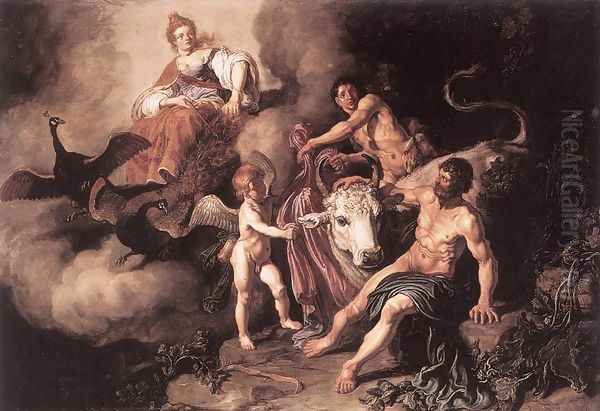
Around 1603 or 1604, like many ambitious Northern European artists of his time, Lastman embarked on a journey to Italy, the wellspring of Renaissance and burgeoning Baroque art. This period, lasting until approximately 1607, was profoundly transformative for his artistic development. He is believed to have spent most of his time in Rome, the epicenter of artistic innovation, but likely also visited Venice, whose painters were famed for their mastery of color and light.
In Rome, Lastman would have encountered a vibrant and competitive artistic environment. He was exposed firsthand to the masterpieces of High Renaissance artists like Raphael and Michelangelo, whose grandeur and classical ideals continued to inspire. More contemporaneously, he would have witnessed the revolutionary naturalism and dramatic chiaroscuro of Caravaggio, whose works were causing a sensation. Another crucial influence was the German painter Adam Elsheimer, who was active in Rome during Lastman's stay. Elsheimer, known for his small-scale, meticulously detailed paintings on copper, often depicting biblical or mythological scenes within evocative landscapes, had a significant impact on Lastman. Elsheimer's ability to integrate figures harmoniously into atmospheric settings and his poetic use of light resonated deeply with the young Dutch artist.
The influence of Venetian painters such as Titian, Tintoretto, and Paolo Veronese, known for their rich color palettes, dynamic compositions, and sensuous rendering of textures, is also evident in Lastman's subsequent work. He absorbed their lessons in creating vibrant, multi-figured scenes filled with dramatic intensity. The Italian experience equipped Lastman with a new artistic vocabulary: a richer, warmer color palette, a greater emphasis on naturalism in figures and emotions, more dynamic and complex compositions, and a heightened sense of drama. He learned to depict human emotions with greater conviction and to arrange figures in space to create compelling narratives.
Return to Amsterdam and Flourishing Career
Upon his return to Amsterdam around 1607, Pieter Lastman quickly established himself as a leading painter of history subjects. His Italianate style, infused with a newfound dynamism and richness, was novel and highly sought after in the Dutch art market. He brought back not only sketches and studies but also a sophisticated understanding of composition and narrative that set him apart from many of his Dutch contemporaries who had not traveled south. His workshop became a magnet for aspiring young artists.
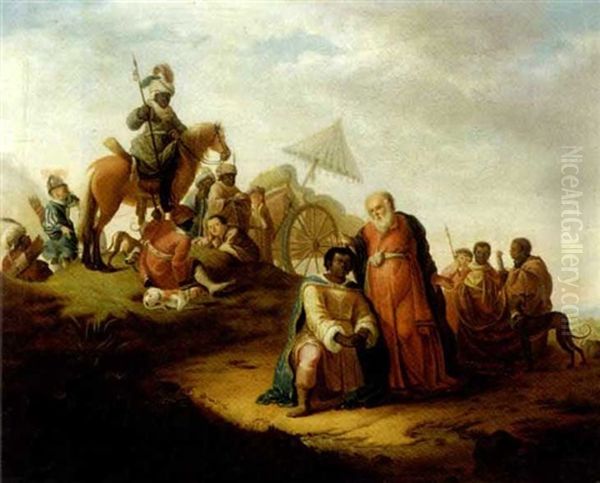
Lastman's reputation grew steadily, and he received numerous commissions for paintings depicting scenes from the Bible, classical mythology, and ancient history. These subjects were popular among the increasingly affluent and educated Dutch citizenry, who appreciated their moral lessons, intellectual content, and the opportunity for lavish display. He became known for his ability to tell a story clearly and dramatically, populating his canvases with expressive figures, rich costumes, and carefully rendered details that enhanced the narrative. His compositions were often complex, featuring multiple figures interacting in dynamic ways, set against architectural or landscape backgrounds that added to the scene's atmosphere.
He lived with his mother until her death in 1624, and later with his unmarried brother, Claes Lastman, who was also a painter, though less renowned. Pieter Lastman himself never married. He achieved considerable financial success and social standing, owning a house on the Sint Antoniesbreestraat, a street where many artists, including later Rembrandt, lived and worked. His success was a testament to his skill and the appeal of his art in a city that was rapidly becoming one of Europe's most important cultural centers.
Artistic Style and Characteristics
Pieter Lastman's artistic style is characterized by several key features that distinguish his work and highlight his importance in the development of Dutch painting.
Subject Matter: Lastman specialized in "history painting," a genre that, according to contemporary art theory, was considered the noblest and most challenging. This encompassed biblical narratives (both Old and New Testament), mythological tales from Ovid and other classical sources, and scenes from Roman and Greek history. His choice of subjects often emphasized moments of high drama, moral decision, or divine intervention. Works like The Angel Raphael Takes Leave of Old Tobit and his Son Tobias (1618, National Gallery of Denmark) or Juno Discovering Jupiter with Io (1618, National Gallery, London) exemplify his engagement with these themes.
Composition and Narrative Clarity: A hallmark of Lastman's style is his ability to construct complex, multi-figured compositions that remain narratively clear. He often employed a frieze-like arrangement of figures in the foreground, allowing each character's gestures and expressions to contribute to the unfolding story. He was adept at using repoussoir figures – figures placed in the immediate foreground at the sides of the composition – to create a sense of depth and draw the viewer's eye into the main scene. His compositions are typically well-balanced, even when depicting moments of intense action or emotion. The painting Coriolanus and the Roman Women (1622, Trinity College, Dublin) showcases his skill in managing a large cast of characters to convey a poignant historical moment.
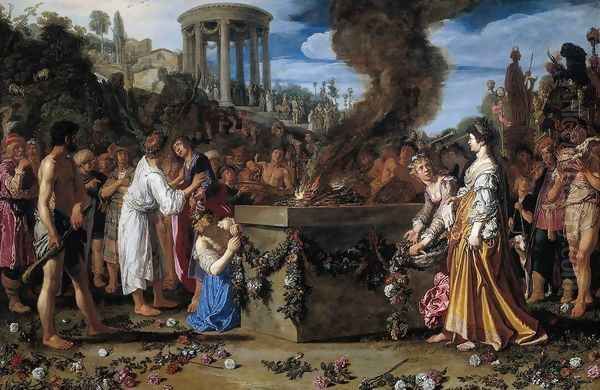
Color and Light: Lastman's palette is rich and vibrant, often featuring strong contrasts of color. He favored warm earth tones, deep reds, blues, and golds, which lent a sense of opulence and drama to his scenes. His use of light, while not as dramatically stark as Caravaggio's tenebrism, is nonetheless effective in highlighting key figures and creating a sense of volume and atmosphere. The influence of Elsheimer can be seen in his attention to the play of light on different textures and surfaces, and the Venetian influence in the overall richness of his color schemes.
Expressiveness and Gesture: Lastman placed great emphasis on conveying the emotional state of his figures through their facial expressions and, particularly, their gestures. His figures often engage in animated dialogue, their hands and bodies actively communicating their thoughts and feelings. This focus on "affetti," or the outward expression of inner emotions, was a key characteristic of Baroque art and something Lastman excelled at, making his narratives vivid and engaging for the viewer. This is evident in works like Orestes and Pylades Disputing at the Altar (1614, Rijksmuseum, Amsterdam), where the tension and loyalty between the friends are palpable.
Detail and Texture: While focused on the grand narrative, Lastman did not neglect the rendering of details. He took care in depicting costumes, armor, and accessories, which added to the historical or mythological verisimilitude of his scenes. His handling of different textures – the sheen of silk, the glint of metal, the roughness of stone – demonstrates his technical skill and his desire to create a visually rich and convincing world for his stories.
Notable Works
Pieter Lastman was a prolific painter, and many of his works survive today, housed in major museums around the world. Some of his most representative and influential paintings include:
_The Baptism of the Eunuch_ (1608, Staatliche Museen, Berlin; later versions exist, e.g., 1620, Staatliche Kunsthalle Karlsruhe): This early work already shows his ability to handle a complex biblical scene with numerous figures and a detailed landscape setting. The story, from the Acts of the Apostles, depicts Philip baptizing an Ethiopian eunuch, a high-ranking official. Lastman captures the solemnity of the sacrament amidst a bustling entourage, showcasing his skill in individualizing figures and creating a lively composition.
_Orestes and Pylades Disputing at the Altar_ (1614, Rijksmuseum, Amsterdam): This painting depicts a dramatic moment from Greek mythology where the two friends argue over who should be sacrificed. Lastman masterfully conveys their intense emotions and unwavering loyalty through their expressive gestures and facial expressions. The classical setting and rich costumes are typical of his history paintings.
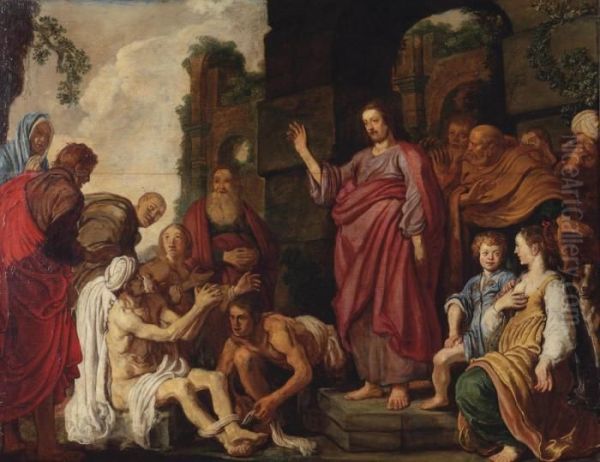
_Juno Discovering Jupiter with Io_ (1618, National Gallery, London): A popular mythological subject, Lastman depicts the moment when Juno, Jupiter's jealous wife, discovers him with his lover Io, whom he has transformed into a heifer to conceal her. The painting is notable for its vibrant colors, dynamic composition, and the expressive portrayal of divine surprise and anger.
_The Angel Raphael Takes Leave of Old Tobit and his Son Tobias_ (1618, National Gallery of Denmark, Copenhagen): This Old Testament scene is rendered with warmth and humanity. The departing angel, the grateful Tobit and Tobias, and the detailed domestic setting create a poignant and relatable image, demonstrating Lastman's ability to infuse religious narratives with genuine emotion.
_Coriolanus and the Roman Women_ (1622, Trinity College, Dublin): This large and complex painting illustrates a story from Roman history where the exiled general Coriolanus is persuaded by his wife and mother not to attack Rome. Lastman skillfully manages the numerous figures, conveying the emotional pleas of the women and Coriolanus's internal conflict. It is a prime example of his mature style and his mastery of grand historical narrative.
_The Raising of Lazarus_ (c. 1620s, Mauritshuis, The Hague): While Rembrandt's later treatment of this subject is more famous, Lastman's version is a powerful and dramatic interpretation, showcasing his ability to convey astonishment and divine power.
These works, among many others, demonstrate Lastman's consistent engagement with complex narratives, his rich color sense, and his focus on expressive figures, all of which were highly influential on his students.
The Workshop: Nurturing a New Generation, Including Rembrandt and Lievens
Pieter Lastman's significance extends beyond his own considerable artistic output; he was also a highly influential teacher. His Amsterdam workshop attracted a number of talented pupils who would go on to become important figures in Dutch art. His Italianate style, his emphasis on narrative clarity, and his technical proficiency made him an ideal master for young artists aspiring to become history painters.
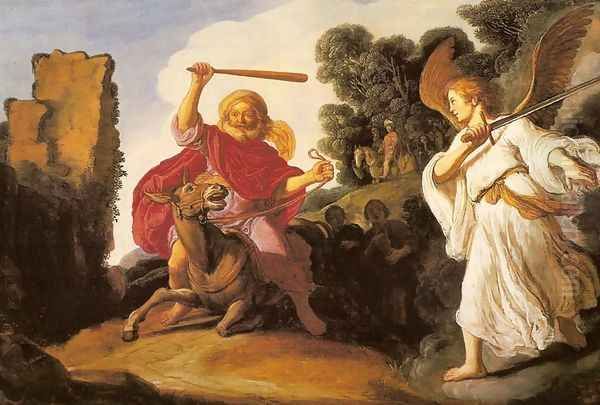
The two most famous artists to emerge from Lastman's tutelage were Rembrandt van Rijn (1606-1669) and Jan Lievens (1607-1674). Rembrandt studied with Lastman for a crucial period of about six months around 1624-1625, after an initial apprenticeship with Jacob van Swanenburgh in Leiden. Though brief, this period was formative for Rembrandt. From Lastman, Rembrandt learned the art of constructing complex historical and biblical scenes, the importance of expressive gesture and facial expression in conveying emotion, and the use of rich colors and textures. Many of Rembrandt's early works, such as The Stoning of Saint Stephen (1625) or Balaam and the Ass (1626), show a clear debt to Lastman's compositions, figure types, and dramatic intensity.
Jan Lievens, who was a contemporary and, for a time, a close associate of Rembrandt in Leiden, also studied with Lastman, likely around the same period or slightly earlier, for about two years. Lievens, too, absorbed Lastman's lessons in history painting, developing a bold and dramatic style. The early works of both Rembrandt and Lievens bear the unmistakable imprint of their master's influence, particularly in their choice of historical subjects, their crowded compositions, and their emphasis on vivid storytelling.
Other pupils of Lastman, though less universally renowned, also contributed to the artistic landscape of the Dutch Golden Age. These include Jan Albertsz Rotius, who became a successful portrait painter, and Bartholomeus Breenbergh, who, though more of a contemporary and fellow traveler in Italianate landscape painting, certainly shared artistic affinities and may have had direct contact or influence. François Venant and Lastman's own brother, Nicolaes Lastman, are also sometimes mentioned in connection with his studio or sphere of influence. The Pynas brothers, Jacob Pynas and Jan Pynas, were also part of this circle of "Pre-Rembrandtists," artists who shared a similar interest in colorful, small-scale history paintings, often with Italianate influences, and with whom Lastman had stylistic affinities. Some scholars suggest Jan Pynas may have even accompanied Lastman to Italy.
Through these students, Lastman's artistic DNA was transmitted and transformed, contributing significantly to the distinctive character of Dutch Golden Age painting, particularly in the realm of historical and biblical narratives.
Personal Life, Social Standing, and Anecdotes
Compared to some of his more flamboyant contemporaries, relatively few detailed anecdotes about Pieter Lastman's personal life have survived. He appears to have been a dedicated and successful professional who managed his career astutely. As mentioned, he never married and lived for a significant portion of his adult life with his mother and later his brother Claes. This bachelor status was not uncommon for artists of the period, some of whom dedicated themselves entirely to their craft.
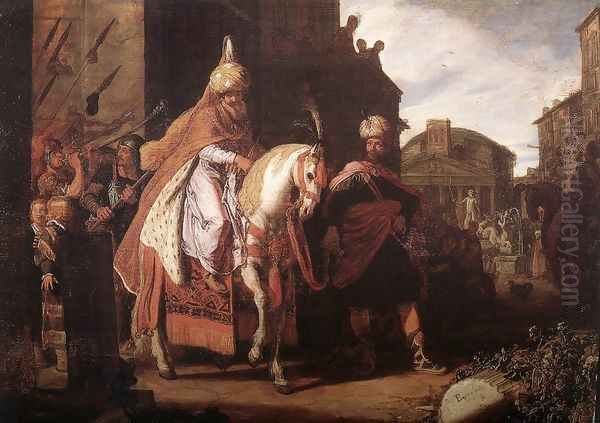
His financial success allowed him to purchase a house in 1619 on the Sint Antoniesbreestraat, an area popular with artists. He later bought an adjacent property in 1632. This indicates a comfortable and prosperous life, built on the consistent demand for his paintings. He was a respected figure in Amsterdam's artistic community, known for his skill and his role as a teacher.
While specific "scandals" or "quirks" are not prominently recorded, his decision to return to Amsterdam after his Italian sojourn, rather than seeking fame in Italy itself (as some artists did), speaks to his connection to his native city and perhaps a shrewd understanding of the burgeoning Dutch art market. His dedication to history painting, a genre that required considerable erudition and skill, also points to an intellectual and ambitious character. The fact that prominent young talents like Rembrandt and Lievens sought him out as a teacher underscores his esteemed reputation.
Karel van Mander, writing in 1604 when Lastman was still young and in Italy, already noted his promise. Later writers, like Joachim von Sandrart, confirmed his importance, particularly as Rembrandt's teacher. His legacy was thus cemented not only by his own works but also by the towering achievements of his pupils.
Artistic Legacy and Enduring Influence
Pieter Lastman's death in Amsterdam in April 1633, at the age of 50, marked the end of a significant career. He was buried in the Oude Kerk. His artistic legacy, however, proved to be enduring and multifaceted.
His most immediate and profound impact was on his direct pupils, particularly Rembrandt and Lievens. Lastman provided them with a model for ambitious history painting, teaching them how to construct dramatic narratives, depict vivid emotions, and use color and light effectively. Rembrandt, throughout his career, continued to explore themes and compositional strategies that can be traced back to Lastman's influence, even as he developed his own unique and deeply personal style. The emphasis on psychological depth and human emotion, so characteristic of Rembrandt, found its early nourishment in Lastman's expressive figures.
Beyond his direct students, Lastman played a crucial role in popularizing history painting in the Dutch Republic. He demonstrated that Dutch artists could tackle grand biblical, mythological, and historical themes with a sophistication and vibrancy that rivaled their Italian counterparts, yet with a distinctly Dutch sensibility. He helped to bridge the gap between the Italian Renaissance/Baroque traditions and the emerging Dutch school, adapting Italianate grandeur to the tastes and values of a Northern European audience.
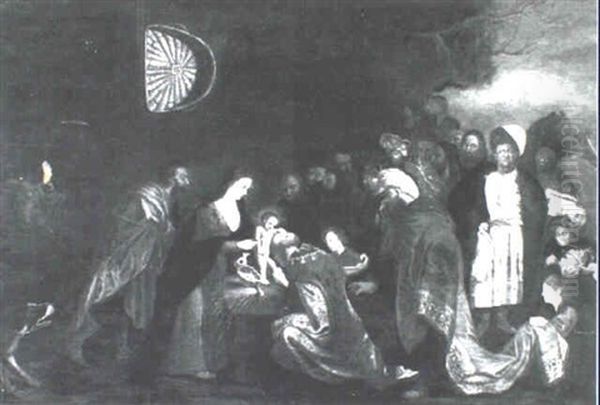
He is considered a key member of the group known as the "Pre-Rembrandtists," a loose collection of artists active in the early 17th century who specialized in history painting and shared certain stylistic characteristics, such as bright colors, detailed execution, and an interest in exotic settings and costumes. This group, which also included artists like the Pynas brothers (Jan and Jacob), Moyses van Wtenbrouck, and Claes Moeyaert, helped to create a fertile environment for the development of history painting in the Netherlands.
While his fame was eventually eclipsed by that of Rembrandt, art historians recognize Pieter Lastman as a pivotal figure. His ability to synthesize Italian influences with a native Dutch tradition, his skill as a narrative painter, and his crucial role as a teacher all secure his place in the annals of art history. His paintings continue to be studied for their artistic merit and for the light they shed on the cultural and artistic currents of the Dutch Golden Age. Artists like Govert Flinck and Ferdinand Bol, who were themselves pupils of Rembrandt, indirectly inherited aspects of Lastman's approach to history painting through their master. Even artists working in other genres in the Netherlands would have been aware of the prestige and narrative power exemplified by painters like Lastman. His influence, therefore, rippled through the Dutch art scene in complex and lasting ways.
Conclusion: A Master Storyteller and Teacher
Pieter Lastman was more than just a precursor to Rembrandt; he was a master in his own right, a gifted storyteller in paint who brought a new dynamism and emotional depth to Dutch history painting. His journey to Italy equipped him with a rich artistic vocabulary that he skillfully adapted to the cultural context of Amsterdam. Through his vibrant compositions, expressive figures, and keen narrative sense, he created works that captivated his contemporaries and provided a powerful model for the next generation.
His legacy is twofold: a significant body of his own paintings that continue to engage and impress, and the profound influence he exerted as a teacher, most notably on Rembrandt van Rijn and Jan Lievens. By nurturing such talents and by elevating the status of history painting in the Netherlands, Pieter Lastman made an indelible contribution to the glories of the Dutch Golden Age. He remains a crucial link in the chain of artistic development, a testament to the power of cross-cultural exchange and the enduring impact of a dedicated master. His works are a vibrant reminder of a pivotal moment when Dutch art was forging its unique identity on the European stage.